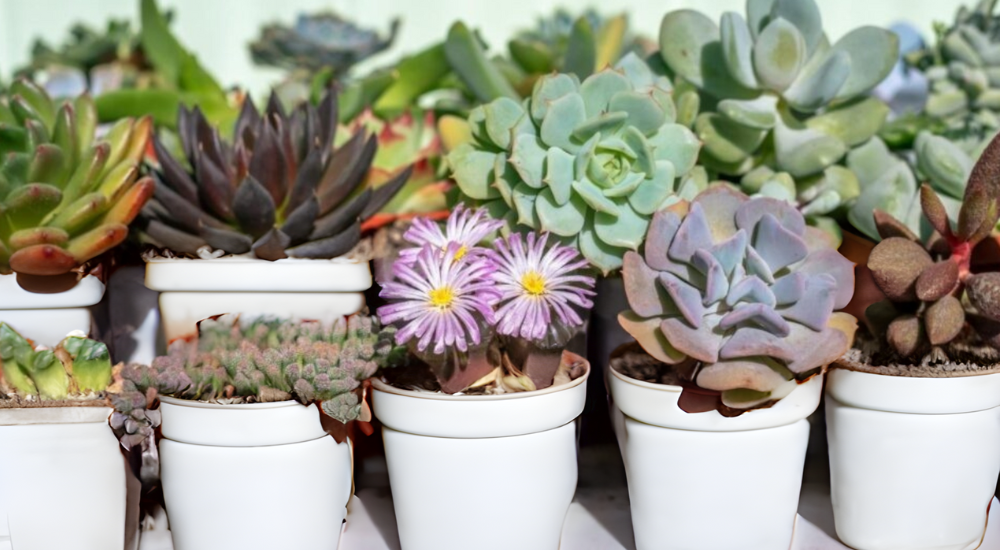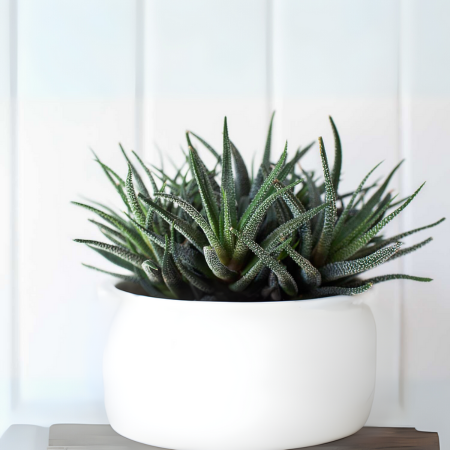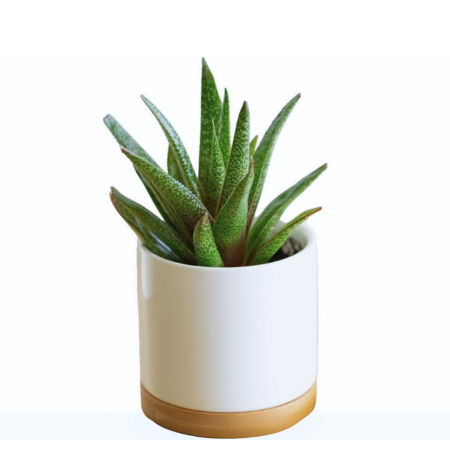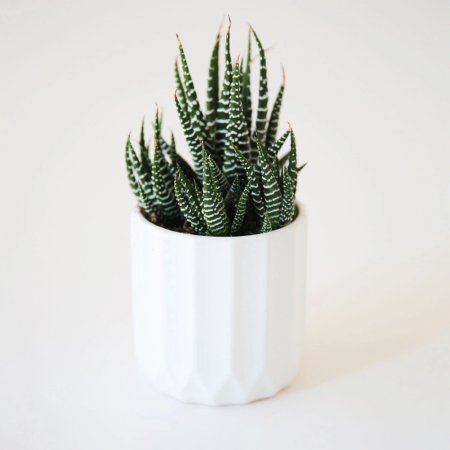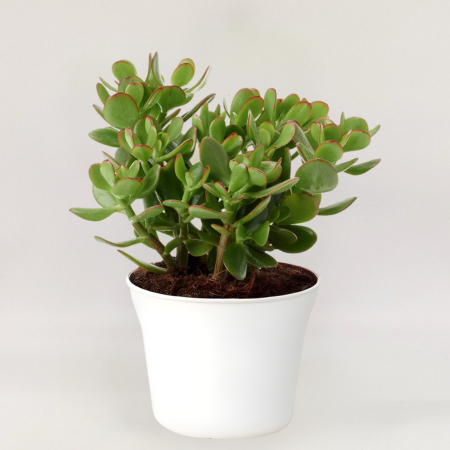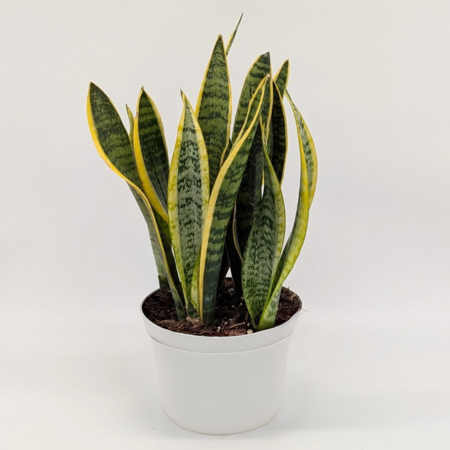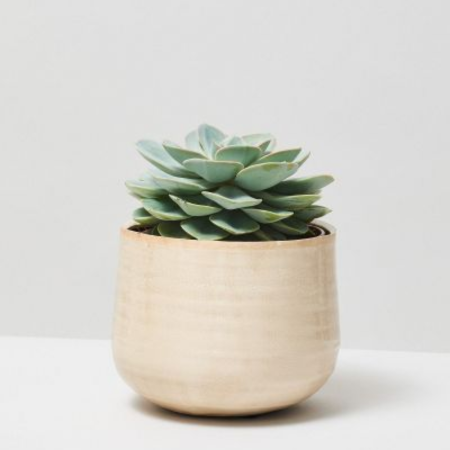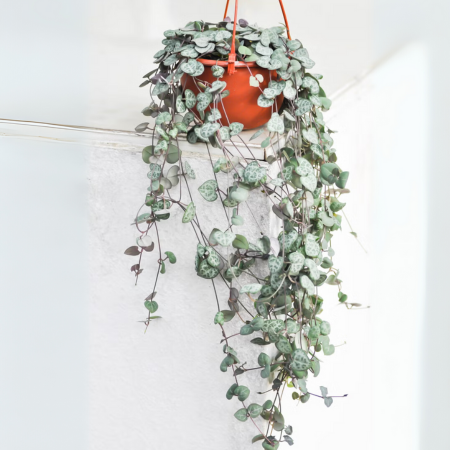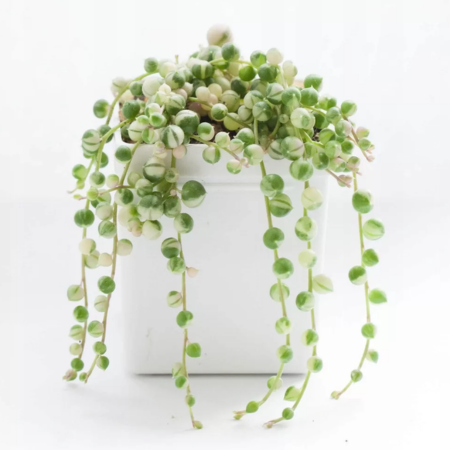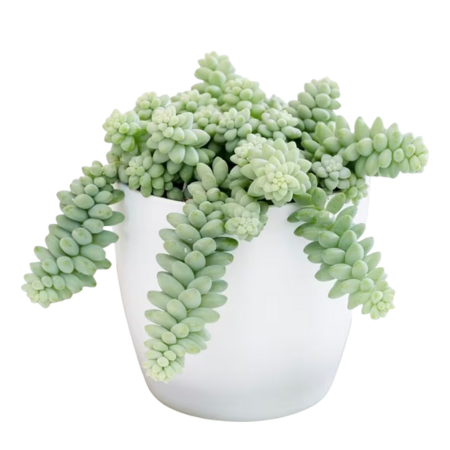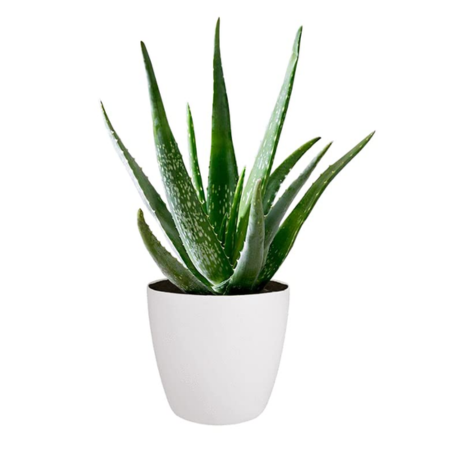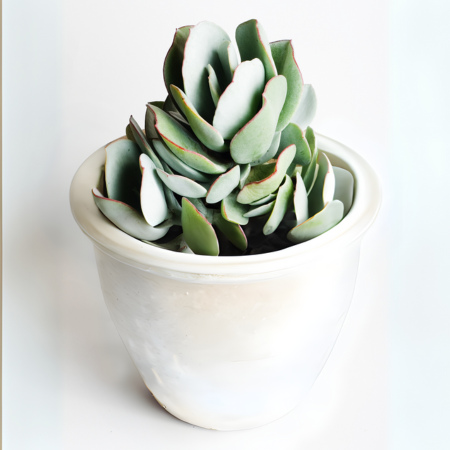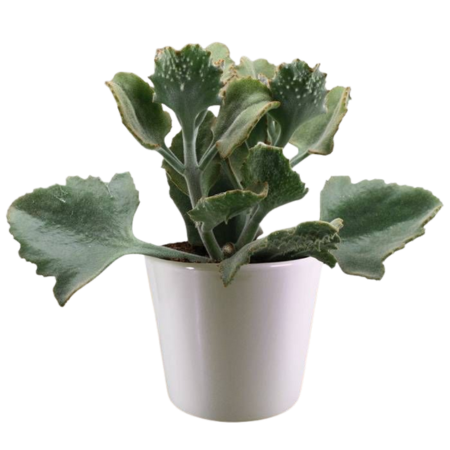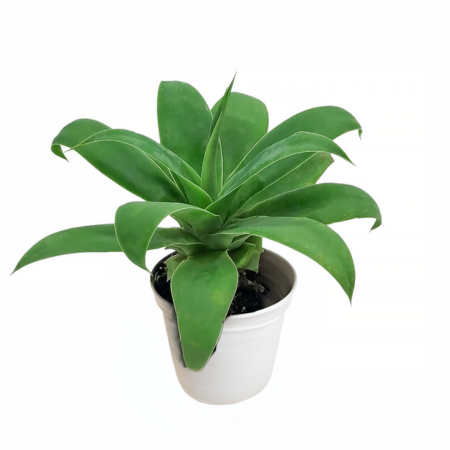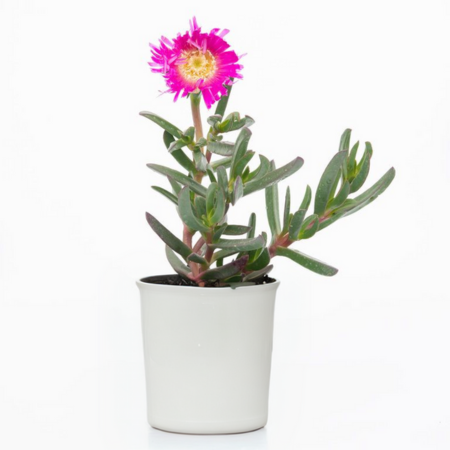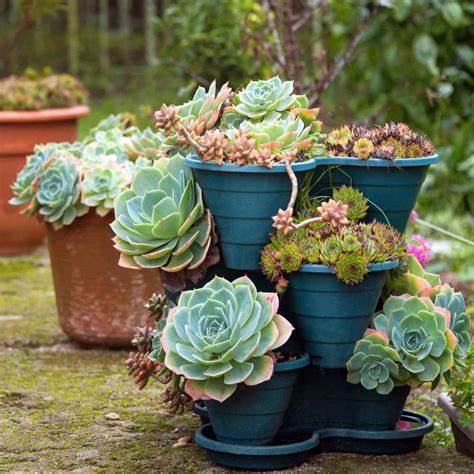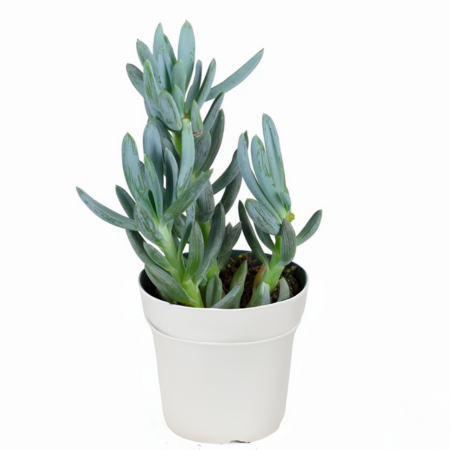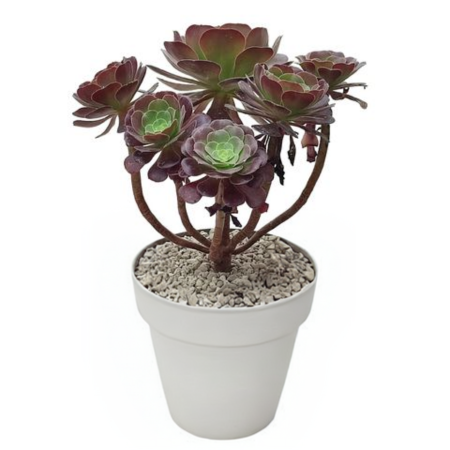Succulents are the quiet achievers of the plant world. Tough, water-wise, and incredibly forgiving, it’s no wonder they’re a favourite for beginner gardeners and anyone looking to add a pop of personality to their windowsill or outdoor space.
From small indoor rosettes to tall sculptural varieties, this guide will help you name and identify different types of succulents, including what they’re commonly called and where they like to grow. So, you can choose the best variety for your space, style, and skill level.
Find all sorts of succulent varieties at All Green Nursery. Visit us to find your favourites or chat with our team for advice.
Quick links to your favourite succulent types:
Indoor succulents: Snake plant, haworthia, echeveria, zebra plant, and jade plant.
Hanging succulents: String of hearts, string of pearls, and donkey’s tail.
Tall succulents: Aloe vera, silver jade, velvet elephant ear, and foxtail agave.
Outdoor succulents: Pig face, hens and chicks, blue chalk sticks, and aeonium.
Indoor succulents
Succulents are some of the easiest houseplants to care for. They can tolerate lower light levels and flourish in the steady conditions of most homes. Whether you’re dressing up some shelves or adding greenery to a work-from-home setup, these are the best succulents for indoor spaces.
Best indoor succulents
- Snake plant: Low light and low maintenance
- Haworthia: For smaller spaces
- Echeveria: Bright and bold colours
- Zebra plant: Petite and unique texture
- Jade plant: Easy to grow
Soil tip: Opt for a free-draining cactus or
succulent mix.
Haworthia
A slow-growing, rosette-style succulent with thick, pointed leaves often striped or speckled in white. Ideal for small pots and modern interiors.
Best for: Apartments and office desks. It thrives in low-humidity environments.
- Water: Lightly every 2 to 3 weeks
- Light: Bright, indirect light or filtered morning sun
Gasteria
A compact, slow-growing succulent with thick, tongue-shaped leaves that often have speckles or bands. Its sculptural look makes it a standout in minimalist interiors.
Best for: Low-light corners, bookshelves, or shared living areas.
- Water: Every 2–3 weeks when soil is fully dry
- Light: Low to bright indirect light. Avoid harsh sun
Extra tip: Gasteria is non-toxic, making it a safer option for homes with pets.
Zebra plant (Haworthiopsis attenuata)
Often mistaken for aloe, this striking little plant features dark green leaves with bold white horizontal stripes (giving it the appearance of zebra markings).
Best for: Bedrooms, bathrooms, or small decorative pots on shelves.
- Water: Every 2–3 weeks or when soil is fully dry
- Light: Bright, indirect light or filtered morning sun
Jade plant (Crassula ovata)
A classic favourite with smooth, rounded leaves that develop a red tinge around the edges. With the right care, it can grow into a small, tree-like shape.
Best for: Living rooms, sunny windowsills, or feng shui corners (believed to bring good luck).
- Water: Thoroughly every 2–3 weeks, then let the soil dry
- Light: Bright, indirect light or filtered sun. Can tolerate full sun indoors
Extra tip: Avoid overwatering, especially in cooler months, and use a heavy pot to support its top-heavy growth.
Snake plant (Sansevieria)
One of the most tolerant and low-maintenance indoor plants, which has upright, sword-shaped leaves with striking variegation.
Best for: Bedrooms, hallways, or low-light corners.
- Water: Sparingly every 3–4 weeks
- Light: Tolerates low light but grows best in bright, indirect light
Extra tip: Known for its air-purifying properties. Avoid cold, damp environments.
Echeveria
Comes in a range of shapes and pastel colours. Its compact size and striking appearance make it a favourite for indoor arrangements. They can also thrive in sheltered spots outside.
Best for: Bright spots like windowsills or sunny shelves.
- Water: Every 2–3 weeks when soil is fully dry
- Light: Needs plenty of bright, indirect light to maintain its shape and colour
Extra tip: Avoid getting water on the rosette, as it can cause rot.
Hanging succulents
When you want greenery that drapes and adds texture from above, hanging succulents are great for adding visual interest to shelves or balconies. Most types thrive in bright, indirect light and require very little maintenance. Just make sure their pots have good drainage and that they’re protected from heavy rain or frost if you want to keep them outdoors.
Best hanging succulents
- String of hearts: Great for beginners and lower-light areas
- String of pearls: Best for bright, dry spots indoors
- Donkey’s tail: Fast-growing but fragile leaves
Soil tip: Use a free-draining succulent mix in pots with drainage holes.
String of hearts (Ceropegia woodii)
With delicate, heart-shaped leaves and slender vines, it is both elegant and resilient. It tolerates lower light than most hanging succulents and is easy to propagate
Best for: Low-maintenance hanging displays or trailing from shelves
- Water: Every 2–3 weeks when soil is fully dry
- Light: Bright, indirect light. Tolerates some shade
String of pearls (Senecio rowleyanus)
With small, round leaves that look exactly like green pearls strung on delicate stems, this plant will sometimes produce tiny white flowers with a sweet cinnamon scent.
Best for: Bright, dry indoor spaces and elevated planters.
- Water: Lightly every 2–3 weeks when soil is completely dry
- Light: Bright, indirect light indoors or sheltered morning sun if outside
Donkey’s tail (Sedum morganianum)
Also known as Burro's Tail, this succulent features thick, plump leaves densely packed along trailing stems that can grow up to 60cm long.
Best for: Sheltered shelves or hanging pots where it won’t be bumped.
- Water: Every 2–3 weeks when soil is fully dry
- Light: Bright, indirect light indoors or dappled sun outside
Extra tip: Handle gently. The leaves drop easily when touched, though they can be propagated to grow new plants.
Tall succulent plants
If you want to add structure or make a statement in your garden or patio, tall succulent plants are a great pick. Many of these varieties grow well outdoors in Melbourne’s temperate climate, but can also thrive in large indoor pots with enough sun.
Best tall succulents:
- Aloe vera: Best for garden beds or large indoor pots with sun
- Silver jade: Great for containers and easy care
- Velvet elephant ear: Dramatic leaves, soft texture
- Foxtail agave: Sculptural rosettes for full sun spots
Soil tip: Choose a gritty, fast-draining mix and raised garden beds or pots with excellent drainage.
Aloe vera
The classic healing plant with its gel-filled leaves. It's not only useful for treating burns and cuts, but the plant itself makes a striking architectural feature.
Best for: Sunny garden beds, large indoor pots near windows, or as a statement plant on patios.
- Water: Deeply every 2–3 weeks in warmer months, less in winter
- Light: Bright, direct sunlight
Extra tip: The plant will produce small offsets (pups) around its base that can be separated and replanted.
Silver jade (Crassula arborescens)
A tree-like succulent with thick, silvery-blue leaves edged in red that can grow up to 1.5m tall over time.
Best for: Large containers, courtyards, or as a focal point in succulent gardens
- Water: Every 2–3 weeks when soil is completely dry
- Light: Bright, indirect light indoors or morning sun with afternoon shade outdoors
Velvet elephant ear (Kalanchoe beharensis)
The velvety leaves are covered in soft, silver-brown fuzz and can grow quite large, giving the plant an almost tropical appearance.
Best for: Protected patios or large indoor spaces with high ceilings.
Foxtail agave (Agave attenuata)
Forms large rosettes of soft, blue-green leaves without the sharp spines of other agaves. Can reach up to 1.2m wide and eventually produces a dramatic curved flower spike.
Best for: Modern landscapes, large containers, or as a sculptural garden feature in full sun.
Outdoor succulents
Perfect for rockeries, borders, pots, and feature beds, outdoor succulents add colour and texture to outdoor gardens. They’re also built for Melbourne’s dry summers and unpredictable rainfall, flourishing even in sandy or poor soil.
Best outdoor succulents
- Pig face: Tough groundcover with colourful flowers
- Hens and chicks: Forms spreading colonies naturally
- Blue chalk sticks: Striking blue-grey colour and texture
- Aeonium: Dramatic rosettes that change colour with seasons
Soil tip: Choose a free-draining sandy soil or gritty succulent mix.
Pig face (Carpobrotus glaucescens)
A native Australian groundcover that produces bright pink, purple, or yellow daisy-like flowers throughout summer and autumn.
Best for: Coastal gardens, steep slopes, or anywhere you need tough, drought-tolerant groundcover.
- Water: Rainfall is usually sufficient once established
- Light: Full sun to partial shade
Hens and chicks (Sempervivum tectorum)
Forms tight rosettes that slowly spread by producing smaller offsets around the mother plant. The leaves often have attractive red tips, especially in cooler weather or bright sun.
Best for: Rock gardens, between pavers, or in shallow containers where space is limited.
- Water: Occasionally, during extended dry periods
- Light: Full sun brings out the best colours
Blue chalk sticks (Senecio serpens)
Creates stunning blue-grey carpets of finger-like leaves that provide year-round colour contrast in the garden.
Best for: Contemporary gardens, as edging along paths, or mixed with other succulents for colour contrast.
- Water: Deep watering every 2–3 weeks during summer, less in winter
- Light: Full sun to light shade. More sun intensifies the blue colour
Aeonium
The dramatic clusters of leaves shift from green to purple or deep burgundy depending on the season and sun exposure.
Best for: Feature plants in garden beds, large containers, or as architectural elements in modern landscapes.
- Water: Regularly during growing season (autumn to spring)
- Light: Morning sun with afternoon shade
Extra tip: They are winter growers and go dormant in summer heat, so adjust watering accordingly.
Find your favourite succulent types at All Green Nursery
With so many types of succulents to choose from, there’s a plant to suit every space. Come by the nursery and explore our range of tall, trailing, indoor, or sun-loving outdoor varieties. Or, chat to the team for advice on growing conditions and the best way to start your succulent collection.

